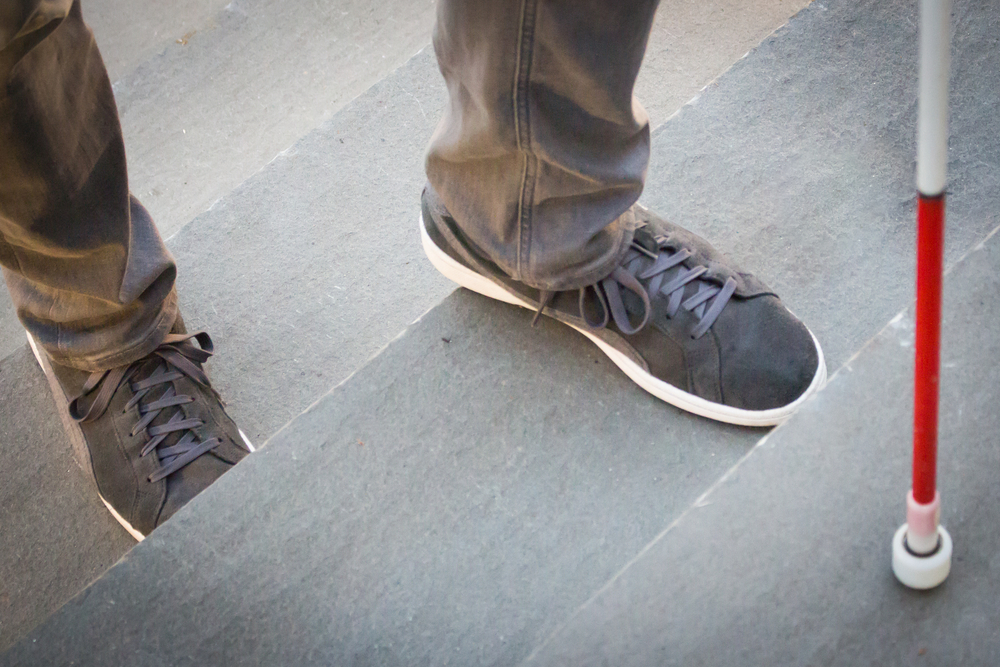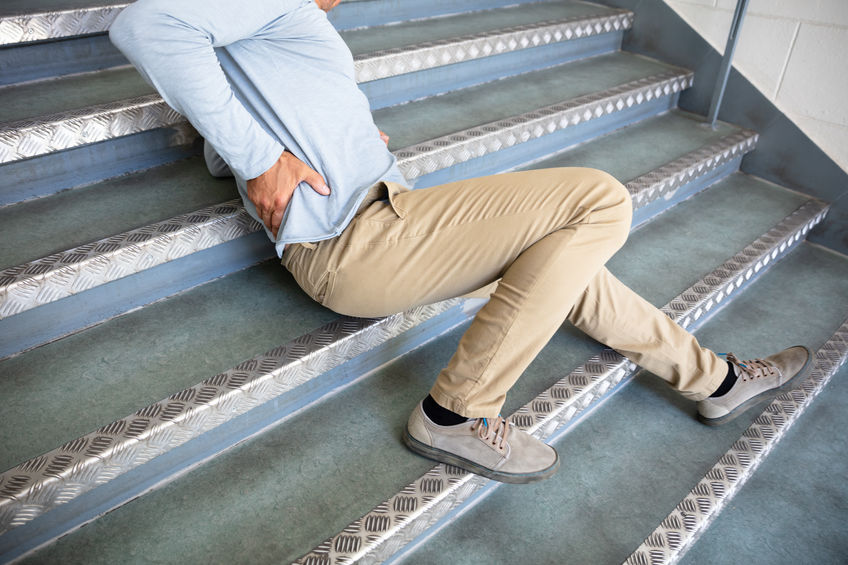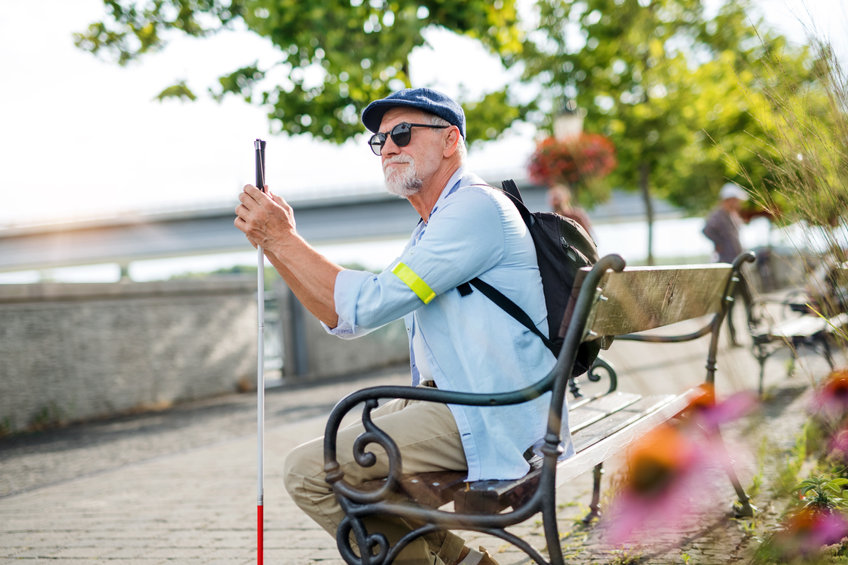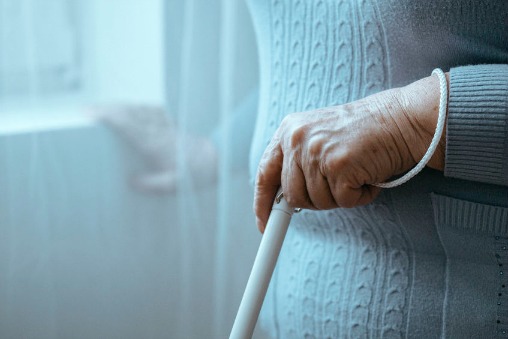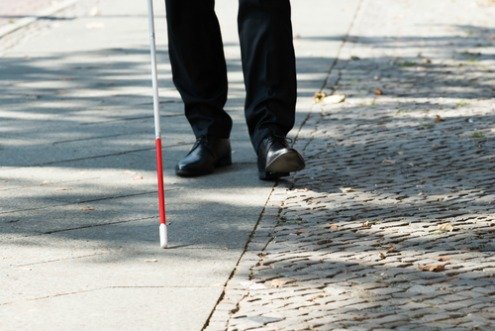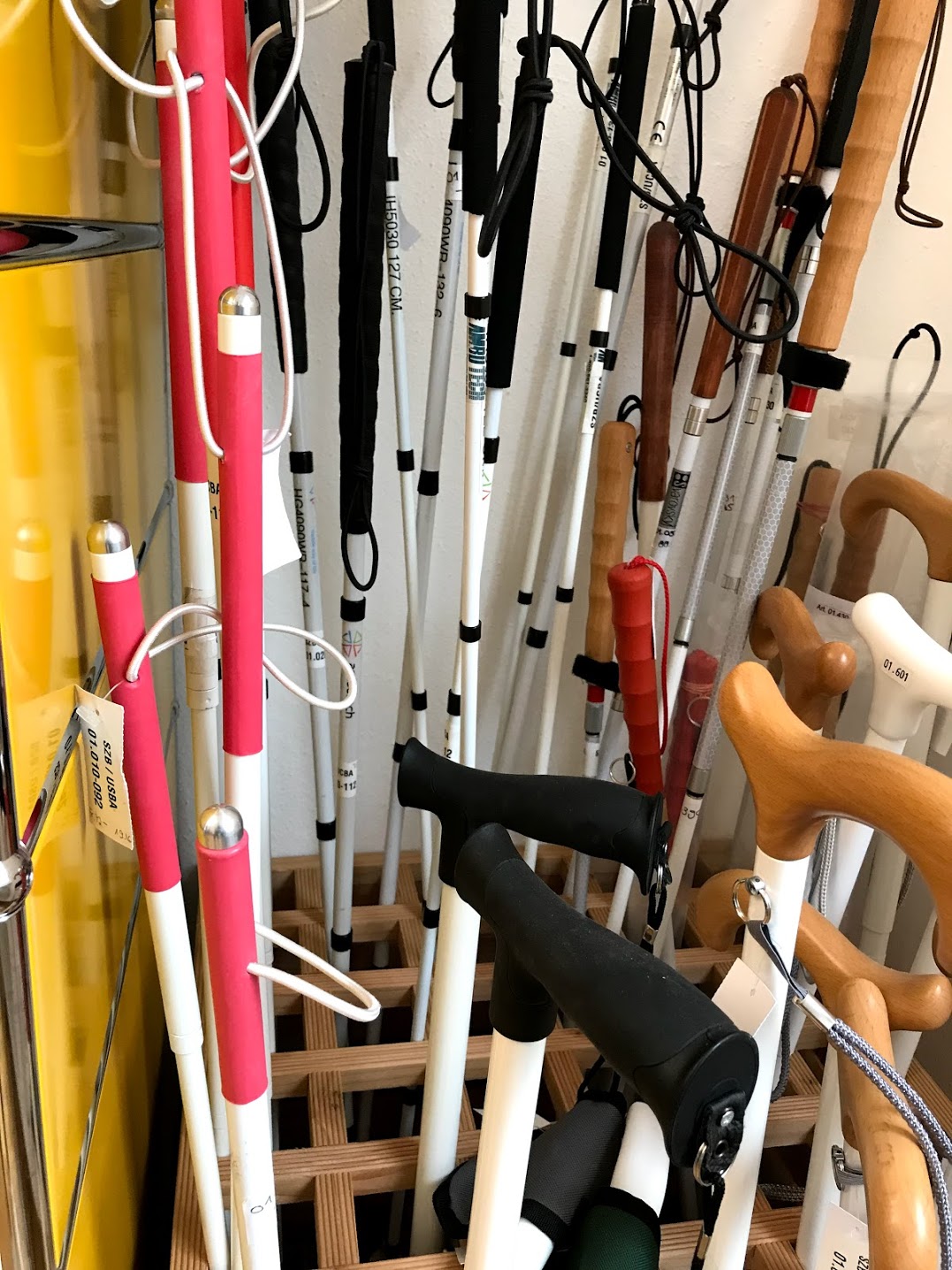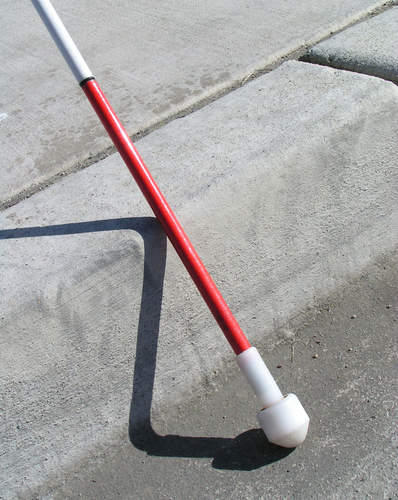White Cane for the Blind and Visually Impaired
A white cane for the blind and visually impaired has become a symbol of independence as well as an opportunity to bring awareness to others to provide extra precaution and courtesy to the user.
A white cane benefits those with all different kinds of visual losses
such as loss of depth perception, central vision or peripheral vision.
Why Use a White Cane
1. Declining Depth Perception
The loss of depth perception or the
ability to perceive distance is another common symptom for those with macular degeneration. Combined with the loss of contrast sensitivity, these two vision changes can affect one’s life and safety in many
different ways.
Difficulty distinguishing how far away an object is can make driving unsafe. The inability to distinguish the curb from the sidewalk provides an increased risk for falls and difficulty seeing and navigating stairs also provides another safety risk.
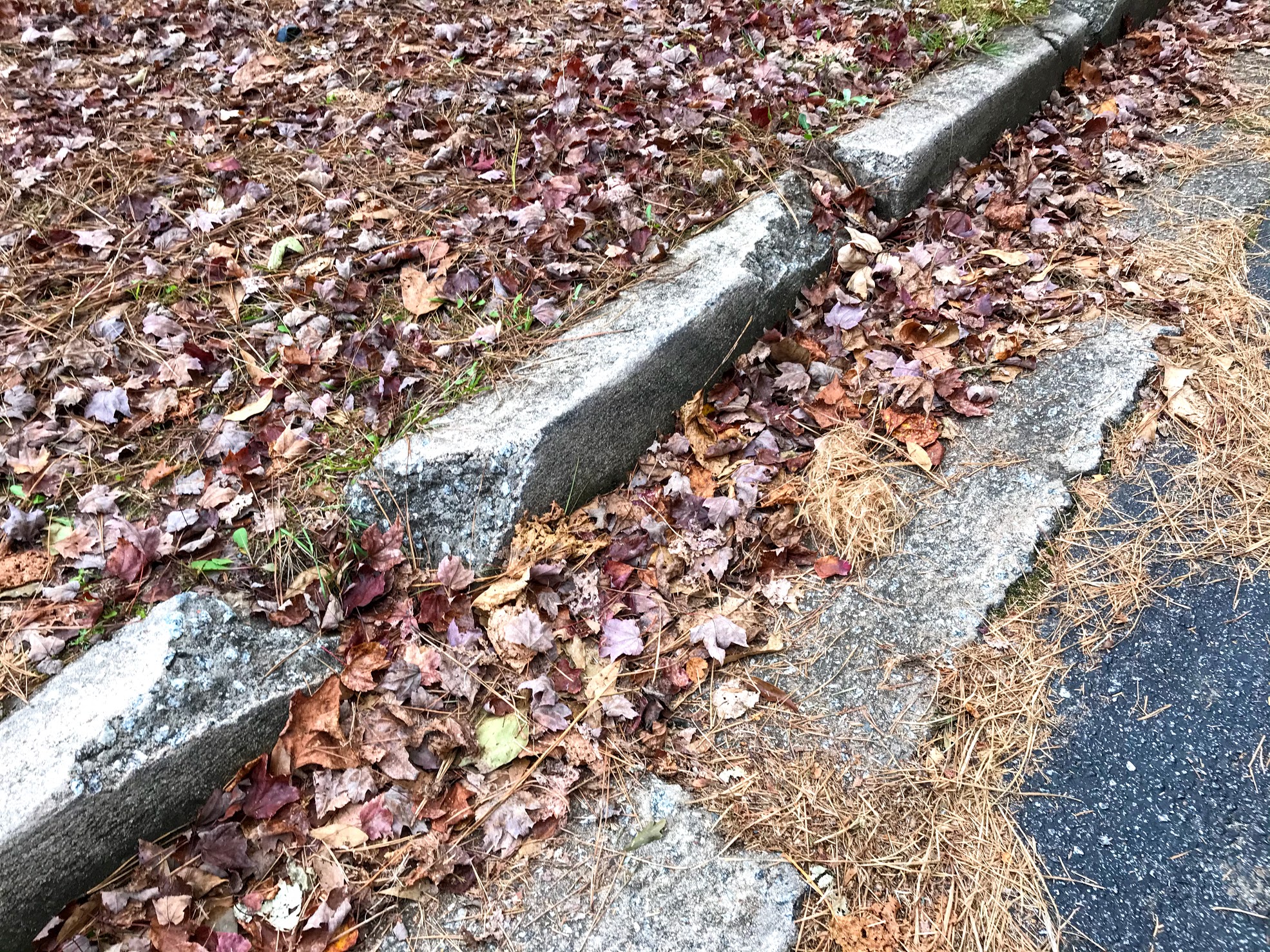
2. Loss of Contrast Sensitivity
Those with vision changes association with macular degeneration are at a high risk for falls and accidents.
Loss of depth perception is reduced when there is loss of visual
contrast. Two healthy functioning eyes working together are required
for good depth perception.
So even if you have one good eye, depth
perception is decreased. While this vision loss can’t be completely
overcome there are some strategies and vision aids one can use to help
compensate.
3. To Detect Obstacles
Hold the long white cane in the center of the body and swing it back and forth before each step to detect obstacles.
4. Alerts Others to Your Visual Impairment
A white cane alerts others and helps them to be aware that one has a visual impairment.
It is a way of communicating to others that one has a vision problem and a reminder to friends and family.
Self Image Using a White Cane
"I hated to admit that I was blind, because it was a change in my self-image. I still had that majority view of blindness, that it was a terrible thing.
I knew that the white cane identified me as a blind person, and I only thought of this negative purpose," shares Thomas Bickford, author of Care and feeding of the Long White Cane.
Thomas Bickford soon learned that the cane would serve as his friend and
give him confidence to travel safely and independently.
Types of White Canes
There are several options to choose from when it comes to selecting a white cane.
Some links in the following sections are eBay or Amazon affiliate links, which means that if you purchase a product through them I receive a small commission. There is no extra cost to you. Find more details on this page.
- Standard Long Cane This is the most common type of white cane for the blind and visually impaired. It typically extends from the floor to the user's sternum.It is designed to detect obstacles at ground level and provide basic information about the user's surroundings.
- Folding Cane A folding white cane can be collapsed or folded for easy storage and transportation. It's popular for its portability.
- Telescopic Cane Similar to the folding cane, the telescopic white cane can be adjusted in length, allowing users to customize it to their specific height.
- Support Canes These canes have additional handles or grips, providing extra support to individuals who may need it.
- Identification Canes These canes may not be primarily designed for mobility but are used to identify the user as visually impaired or blind. They might be shorter or thinner than standard canes.
- Long Cane with a Rolling Tip A white cane with a rolling tip has a small wheel at the tip, reducing friction and making it easier to maneuver.
- Ultra-Light Canes These canes are made of lightweight materials like carbon fiber, making them easy to carry and handle.
- White Canes with Technology Some canes are equipped with technology like sensors, GPS, or ultrasonic devices to provide additional information about the environment.
Instructions for Using a White Cane
The author of Care and Feeding of the Long White Cane recommends:
"The cane needs to reach a good two steps in front of where you are stepping. As a practical matter, if you find yourself overstepping the cane, dropping off curbs you didn't find, try a longer cane."
You can get specific instructions and tips on how to use a white cane here:
White Cane Use and Instructions
A short video on white cane use:
How To Get a Free White Cane
The National Federation of the Blind (NFB) offers free white canes to eligible participants in the fifty states, the District of Columbia and Puerto Rico.
The length of the cane matters. First time users will start out with a shorter cane, while those with more experience will progress to a longer one.
The NFB recommends that adult first time cane users measure from their shoulders to the floor. One can request a free cane more than once. So when a longer cane is needed, another request can be made.
Free White Cane Program by National Federation for the Blind
White Cane Safety Day
President Lyndon B Johnson proclaimed October 15th as White Cane Safety Day in 1964 with these words:
"The white cane in our society has become one of the symbols of a blind person's ability to come and go on his own. Its use has promoted courtesy and special consideration to the blind on our streets and highways. To make our people more fully aware of the meaning of the white cane and of the need for motorists to exercise special care for the blind persons who carry it Congress, by a joint resolution approved as of October 6, 1964, has authorized the President to proclaim October 15 of each year as White Cane Safety Day."
"The mission of White Cane Day is to educate the world about blindness and how the blind and visually impaired can live and work independently while giving back to their communities, to celebrate the abilities and successes achieved by blind people in a sighted world and to honor the many contributions being made by the blind and visually impaired."
Become more confident in getting around, shopping and traveling through the use of a cane. Take advantage of all of its benefits by learning how to properly use it to help you navigate with improved safety and security.
Go from White Cane for the Blind to Macular Degeneration Aids
Return to WebRN Macular Degeneration Home
√ Prevention of Macular Degeneration?
√ Tips for Daily Living?
√ Food Suggestions for a Macular Degeneration Diet?
√ Ideas on Visual Aids to Maximize your Sight?
If you said "yes" to any of the above, sign up for the monthly Macular Degeneration News.
